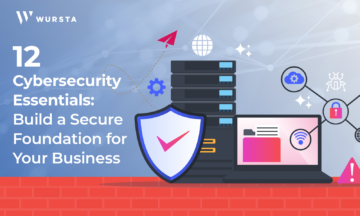Is Technology beginning to take a greater role in overall Business Strategy?

With the conclusion of Google Next, I couldn’t help but leave with a distinct feeling that industry as a whole is on the precipice of another fundamental shift in how technology is viewed in business.
In the last 20 years, technology has gone through a few phases at the enterprise leadership level. It began as a tool. These tools allowed organizations to execute better across the board, and many internal IT organizations were set up as business support organizations. Their role; to support the IT toolkit across the business.
Shortly after, we saw a shift in the overall position of IT at the leadership level. This IT toolkit began to evolve. Cloud Computing, in its infancy, was about enabling the workforce to do more. The last decade or so has seen a shift from IT, the support organization, to IT, the enabler of the organization. This is most evident in the office of the CMO. Digital marketing strategies and their cross functional pollination have changed and enabled many aspects of the greater business. Their success has paved the way. Technology has evolved from a supporting toolkit to an enabling platform to truly impact topline business.
Now, in 2017, I can’t help but wonder, is technology going through another shift? With the tremendous availability of computing power, and the introduction of things like machine learning platforms, we’re seeing early visionary business leadership clearly identify technology as an integral part of their forward looking strategy. For tomorrow, they are looking at this through the lens of both the past and the future.
In a fantastic manufacturing example, I’ve witnessed a discussion evolve from providing the platform to enable business success, to a five year planning session where the majority of the discussions were “what technologies are going to increase our yield?” and “are we overlooking things that would allow us to better understand and serve our customers?’ This isn’t a ‘how do we do more of what we do next year a little better?” conversation, this is a “how do we change our business to be better with technology?” conversation.
The introduction of things like BigData and large scale data analytics was, at first, bucked by many business leaders. Years later, history has shown the office of the CMO as having proven not only the effectiveness of data analytics, but its ability to impact the bottom line. Its usage is becoming prevalent throughout the enterprise now, but is it really only one piece of a larger pie?
Take, for example, the application of machine learning for the enterprise. Machine learning isn’t about robots or T800’s helping to run your business (perhaps someday). Instead, imagine it as a service which, deployed correctly, can help make inferences and identify insights which you may not have been able to otherwise make (at least without a collection of on-staff data scientists). Think complex customer buying patterns, infrastructure optimizations, and automations. It’s no wonder that, after a brief introduction to what’s newly possible, business leadership is truly re-examining technology as a cornerstone to future business strategy.
What are the takeaways from all of this? It’s my opinion that technology is beginning another fundamental transition in its place in overall business strategy. Traditional support organizations are still needed, and platform toolkits are an important, not to be overlooked part of workforce enablement. But as a business leader, technology should be starting to play a key role in your five year plan. Understanding some of the high level possibilities and pushing your team to think non-traditionally about technology is going to prove a market differentiator in the years to come. We believe this to be true in any industry.
To close with some thought provoking questions, I challenge you with the following points:
- Is technology at the heart of your forward looking security strategy?
- Are you making use of all of your internal and external facing data to make informed business decisions?
- Do you have a defined workforce collaboration strategy as part of your 5 year plan?



